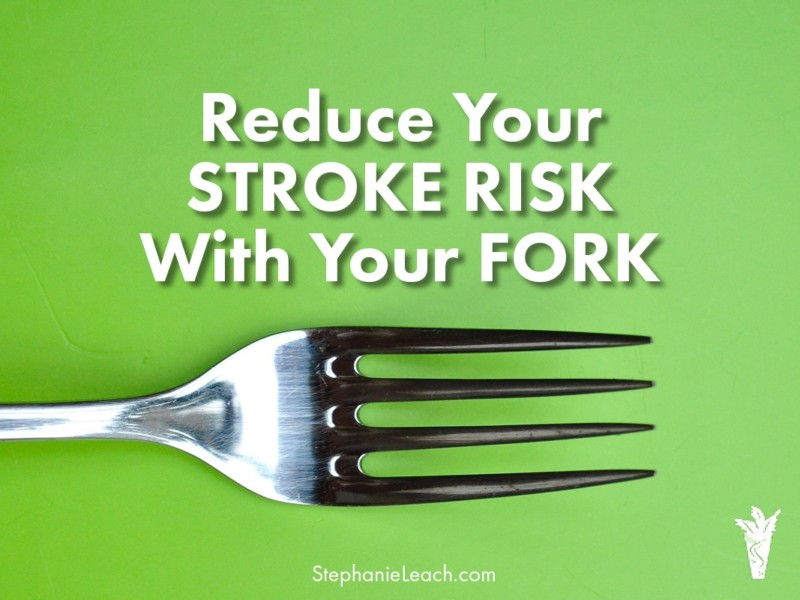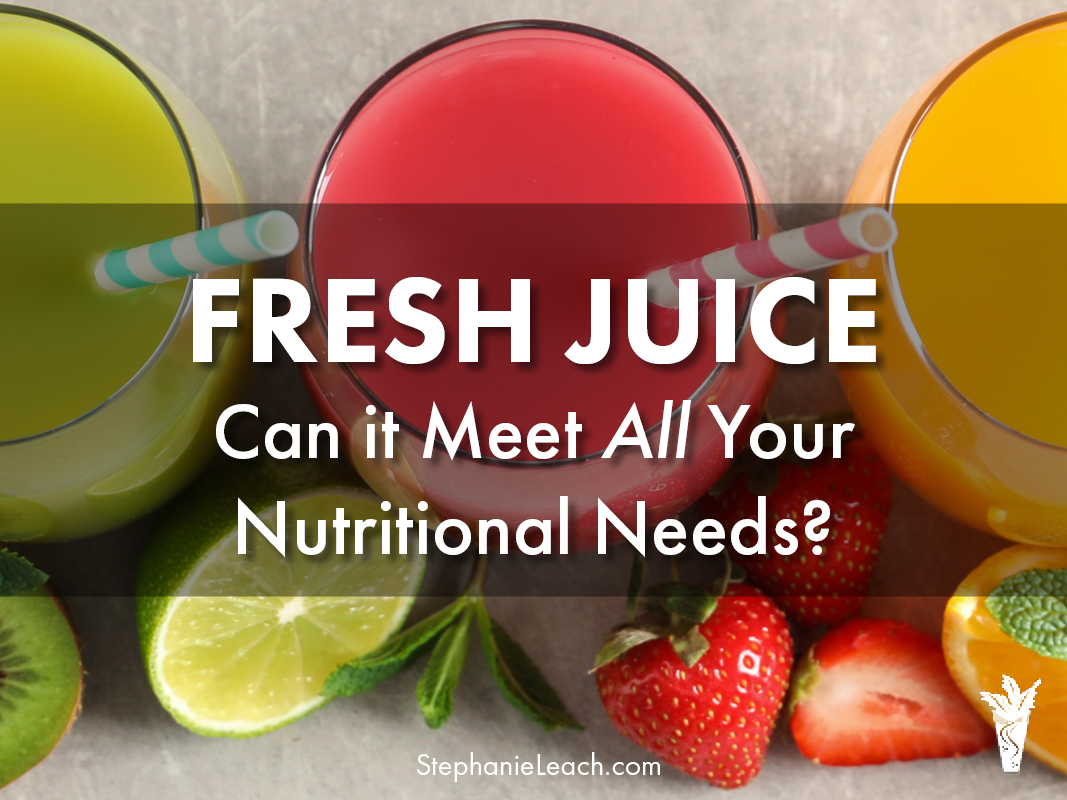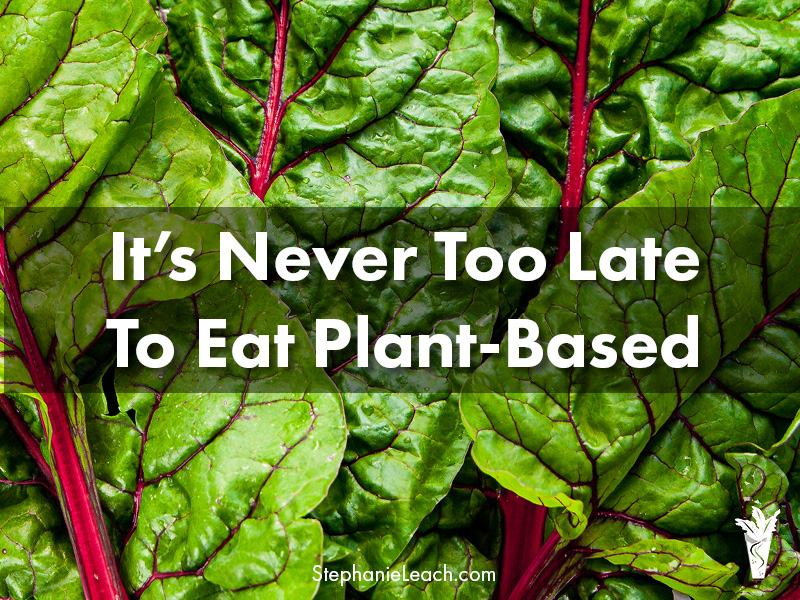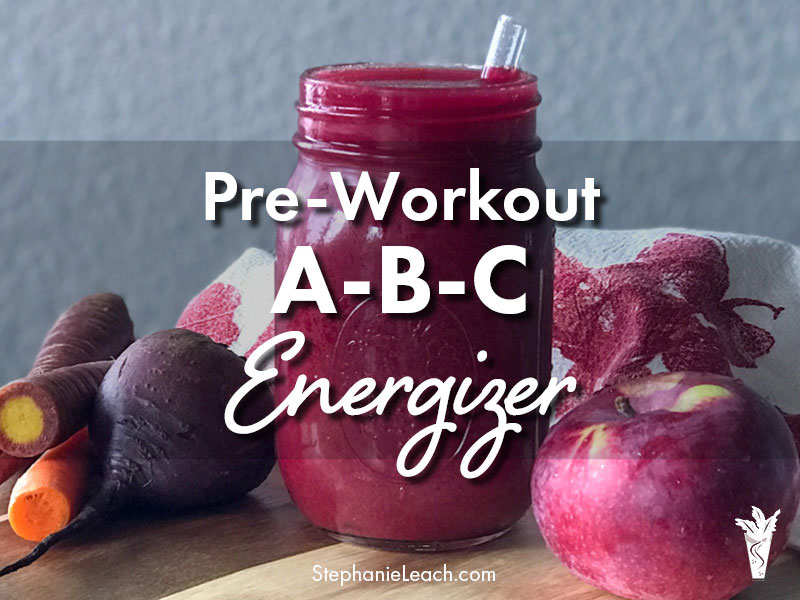Each year nearly 800,000 people in the US experience a stroke. It’s the leading cause of adult disability, and the 5th leading cause of death.
But here’s a number that should really get our attention:
Up to 80% of strokes can be prevented.
There are many risk factors for stroke. While some are non-preventable medical disorders, most risk factors are tied to lifestyle choices, and the medical conditions associated with those choices.
Armed with the facts, you can take action to protect yourself from what is often a preventable tragedy. Your fork is involved. But first, let’s explore the risk factors.
Medical Risk Factors for a Stroke
Medical risk factors for stroke include high blood pressure, atrial fibrillation, high cholesterol, diabetes and circulation problems.
High Blood Pressure
The number one cause of stroke! Individuals with high blood pressure are at 1.5 times the risk of stroke compared to those with normal blood pressure. If you have high blood pressure, it’s important to keep it under control. You might also consider lowering your blood pressure with dietary changes.
Atrial Fibrillation
An irregular heartbeat is common in individuals with high blood pressure, heart disease and diabetes. AFib raises stroke risk because it allows blood to pool in the heart which can lead to clots that travel to the brain.
High Cholesterol
In addition to heart disease, high cholesterol can block blood flow to the brain and lead to a stroke. It’s important to get your cholesterol down into the normal range. This can be done with a low-fat, whole food plant-based diet in a matter of days.
Diabetes
People with diabetes are up to 4x more at risk for a stroke because they usually also have high blood pressure, high cholesterol or AFib. Type 2 diabetes is often reversible with a whole food, plant-based diet and lifestyle changes.
Circulation Problems
Most often this is atherosclerosis, fatty deposits in the arteries that harden and obstruct blood flow, a condition also reversible with dietary changes.
Lifestyle Stroke Risk Factors
There are choices we make every day that can either contribute to or reduce our risk of stroke. These include our dietary choices, physical activity, alcohol consumption and smoking.
Smoking
Smoking doubles the risk of stroke. Quitting smoking isn’t easy, but it’s worth every effort (repeatedly if necessary) to quit.
Alcohol
Drinking too much alcohol is linked to stroke in many studies. If you choose to imbibe, men should keep it to 2 drinks, and women 1 drink per day. (1 drink = 12 oz. of beer, 5 oz. of wine or 1-1/4 to 1-½ oz liquor.)
Exercise
Studies show that exercising 5 or more times a week is associated with reduced stroke risk.
What to Eat to Reduce Stroke Risk
NOW we get the exciting part – diet and nutrition to dramatically reduce your risk of stroke- with your fork!
Lots of Fiber
High fiber intake may help ward off stroke. How much fiber do we need? The daily recommended amount is 14 grams for every 1000 calories in your diet. Fiber is important for overall health, including bowel health, maintaining a healthy weight, and reducing the risk of many cancers. Yet 97% of Americans don’t get enough fiber. Fiber is only found in whole plant foods.
Potassium
Eating whole food sources of potassium like greens, beans, and sweet potatoes can reduce your risk of stroke. The recommended daily allowance (RDA) from food is 4700 mg. Less than 2% of Americans are getting the RDA. Studies show that if you can increase your intake to just 1640 mg per day, you may be able to reduce your stroke risk by 21%.
Citrus
Citrus fruits contain hesperidin, which increases blood flow in the body including your brain. Yes, drinking orange juice is proven to increase blood flow to the brain. Another reason to enjoy fresh raw juice!
Antioxidants
Studies show that those who eat the most antioxidant rich foods have the lowest stroke risk. Plants have 64 times more antioxidants than animal foods. Even iceberg lettuce has more antioxidants than chicken, salmon or eggs.
How does it work?
“Antioxidant-rich diets appear to protect against stroke by preventing the circulation of oxidized fats in the bloodstream that can damage the sensitive walls of small blood vessels in the brain. They can also help decrease artery stiffness, prevent blood clots from forming, and lower blood pressure and inflammation.” – How Not to Die, by Michael Greger, MD.
Berries and greens are high antioxidant foods. Try to eat a serving of berries every day, and several servings of greens. But you don’t have to cherry-pick. Eating a large variety of vegetables and fruit will help ensure you get adequate fiber, potassium and antioxidants.
Plant-rich diets also help reduce the risk of stoke because they can help you eliminate many of the medical risk factors, including high blood pressure, type 2 diabetes, high cholesterol and obesity.
Food is powerful. You can achieve a vibrant, healthy body and greatly reduce your risk of stroke with your fork!
As a Certified Health Coach, I enjoy helping people make doable changes that stick. Eating a nutrient-dense whole food, plant-based diet can be varied and delicious. If you are concerned about your health and are interested in getting support to achieve your health goals, click here to book your complimentary Health Consultation.
Sources
National Stroke Association
How Not to Die, by Michael Greger, MD.









Leave A Comment